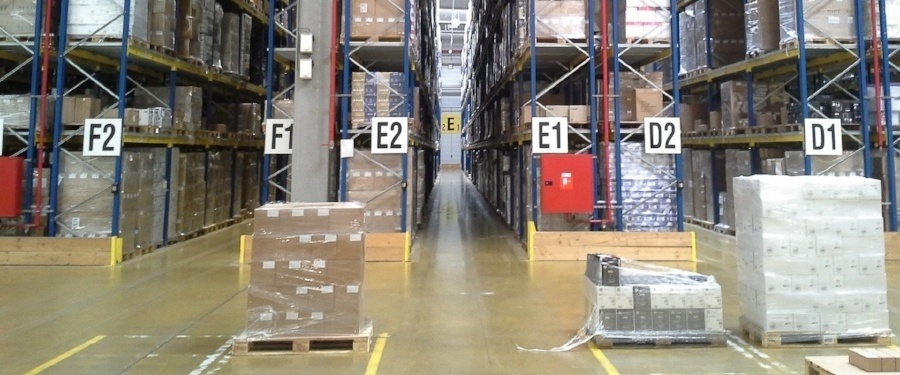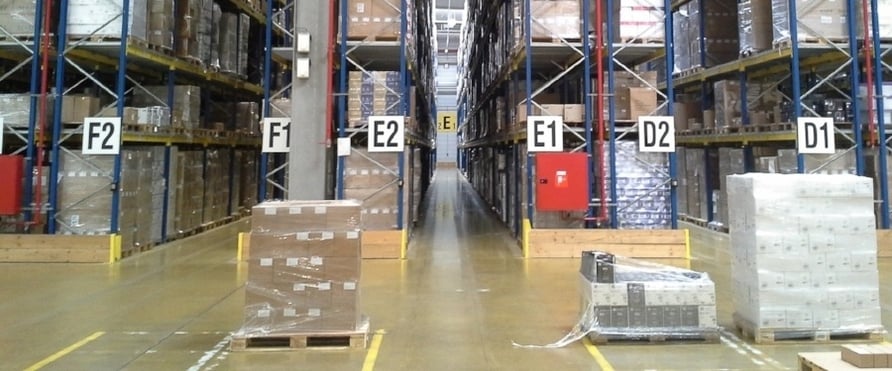Spotlight on Warehouse Management and Distribution Centre Automation

 The basic function of a warehouse is to provide an efficient means to store inventory and to dispatch ordered goods in a timely manner to the next node in the supply chain, be it a downstream assembly plant, a retail outlet or the point of final consumption.
The basic function of a warehouse is to provide an efficient means to store inventory and to dispatch ordered goods in a timely manner to the next node in the supply chain, be it a downstream assembly plant, a retail outlet or the point of final consumption.
The systems that run the warehouse are designed to enable an efficient and unrivalled goods distribution operation by optimising the way personnel, inventory, and equipment are all managed. Typically the Warehouse Management System (WMS) focuses on the first two – so optimising the way orders, inventory and people are deployed to respond to changing demand patterns - whilst the Warehouse Control System (WCS) focuses on the third – the optimal usage of the available transport means and storage methods, otherwise known as materials handling equipment (MHE), and controlling them in an integrated fashion. Examples of MHE might include conveyors, sorters and automated storage and retrieval systems (AS/RS).
Whilst there is some functional overlap between what the two broad system types offer and whilst there is some debate as to the need for both types of system in certain operations,it has become a widely accepted view that the more complexity and the more pressure that exists within a supply chain, the greater is the need for the two types of system to be present. In the retail industry, for example, with the non-stop growth of e-commerce and the gradual reality of 'everywhere commerce', where mobile technologies allow customers to decide where, when, and how to shop, organisations have been scrambling to keep up not only with their competition, but with their customers as well. This has put exceptional pressure on supply chains, globally. Having to operate, simultaneously, in all channels, retailers have sought any way possible to increase efficiency and speed in their warehouse operations.
The key though - to truly optimise operations, maximise efficiency and increase DC velocity - is to get both the WMS and the WCS working together in a finely tuned, synchronised and seamless way. Achieving this is critical to success in sophisticated, high volume, multi-channel operations.
'Seamless integration' though is not always easy in the real world as the two types of systems are built to solve different problems and are developed by separate groups of software vendor. In recent years the latest technological advances on both sides have significantly improved the integration while increasing flexibility and lowering implementation costs.
In previous versions of Manhattan Associates' WMS for example, the system would go through its business logic and at specific points in the workflow would send a data message to an external system, like a WCS, via a predetermined communication protocol. In more recent releases of the Manhattan WMS product, there have been several significant enhancements in the area of WCS integration. The first relates to the identification of all relevant message creation points within the valid workflows. Having identified all the message points, the system now enables users to simply turn a specific message on or off via an easy to use configuration screen. The second enhancement involves the creation of a straightforward configuration screen that allows a non-technical resource to configure the communication protocol(s) to be used to transmit the data between the WMS and the WCS for the various messages.
The third enhancement involves the creation of a sophisticated message mapping rule configuration module that allows the content of messages to be defined and dynamically constructed based on business rules and data settings – instead of hard coded programming logic. These advancements reduce project risk, the time required to do a project, and the cost of ownership.
So what is considered 'best practice' in this new world of integration? Firstly,particularly within a highly automated, complex warehouse environment,it is critical to ensure that both the WMS and WCS are leveraged. Secondly, it is important to ensure a configurable approach is adopted as opposed to the older, hard-wired approach. Finally, it is crucial to understand that exceptions to the rule will always occur and therefore to ensure that exception management and exception processing are incorporated into solution design and implementation.
And how is the new integration affecting company's bottom lines? In the large, complex DCs companies are finding success thanks to material handling automation, these are still few and far between in South Africa and as such we need to look internationally for examples. For example, Kiabi, one of France's leading fashion retailers realised its proprietary warehouse management system had reached its limits in terms of throughput capacity and optimisation potential. Picking waves could not be modified once they were underway and the system didn't provide the flexibility for customs clearance. According to Béatrice Régnier logistics organisation manager at Kiabi, "Manhattan's Warehouse Management comfortably handled a volume growth in excess of 25% in two years while improving accuracy and accommodating order changes up until goods dispatch." Picking waves that couldn't be amended by the old system can now be modified at any time.
In China, Sinopharm Holding Co, Ltd., the country's largest pharmaceutical distributor, implemented Manhattan's WMS solution to modernise its supply chain. "Manhattan Associates' software has delivered impressive improvements to our service operations while streamlining the entire working procedures of our logistics centre. It enhances every step from receiving to inspection, through put-away, re-checking, packing and shipping," said GuYimin, CIO of Sinopharm.
Tally Weijl, the fashion designer with more than 350 stores in 24 countries across Europe and the Middle East deployed the powerful pre-integrated Manhattan WMS solution in its two DCs that handle more than 18 million items each year. The results speak for themselves. Picking productivity is up 20% whilst the Put-to-Store Process is 35% more efficient.
In America, Carter's, Inc., the largest brand marketer of apparel exclusively for babies and young children in the U.S. under the Carter's and Oshkosh brands, has had to face a new reality in its DCs. "Our business has changed dramatically with customers pushing many of their traditional back room functions back to us," said Peter Kok, director of supply chain process development. "Even with so many criteria to fill, put-to-store for our own stores, dynamic processing for key customers, case-in/case-out for the mass channel, and traditional pick and pack for our mom-and pop stores—Manhattan's Warehouse Management supports all of them."
Other than the new, configurable protocols in the latest WMS versions, what does the future hold for WMS/MHE integration? WMS innovation and distribution centre automation will continue. Manhattan Associates, for one, is constantly identifying enhancements for future versions and part of that is market awareness. The company originally built in integration for pick-to-light and carton shipping sorter integration, but so much more is happening now in the automation arena. For example, a relatively new MHE vendor has come to market with small pod-style robots (roughly the size of a chair base) that navigate the warehouse, transport a shelf of inventory, and bring it to the order fulfilment associate.
This completely flips the paradigm. The worker does not have to move, but rather stays in place, in an ergonomically designed station while the product is brought to them. On the software side, an increasingly popular approach is "wave-less picking". Essentially, this strategy involves dynamic WMS/WCS integration on a real-time basis versus a batch approach. This allows greater manipulation of the tasks and the sequence of task sin the queue. The result is an improved order fulfilment process thanks to increased utilisation of the inventory, the people, and the material handling equipment – all of which are expensive assets to waste. Lastly, many of our automation-minded customers and implementations have leveraged voice directives (text to speech) and voice recognition (speech to text) as another way to improve the order fulfilment process in certain areas of the distribution centre.
Voice solutions allow associates to work more freely, with both hands, and with their head up, focused on the travel, safety, and the task at hand. So whether it's next generation mini retrieval robots, dynamic work task assembly and assignment, or voice-based processes, the WMS/WCS integration capabilities will be front and centre when it comes to delivering the required flexibility and lower total cost of ownership.
Never miss a post! Subscribe to our blog and get Supply Chain Junction’s latest content (from expert tips to the latest industry trends and more) straight to your inbox.
TAGS
- WMS (51)
- Warehouse Best Practice (46)
- Implementing a WMS (29)
- Managing your warehouse (19)
- Omni Channel (18)
- eCommerce (18)
- Blog (16)
- Supply Chain Best Practice (16)
- Customer Journey (9)
- Mid-Level (8)
- Warehouse optimisation (7)
- General Tips (5)
- Industry General (5)
- Information (5)
- Trends (5)
- managing your Supply Chain (5)
- saudi arabia (5)
- Press Release (4)
- smart warehouse (4)
- 3PL (3)
- News (3)
- ERP (2)
- Entry-level (2)
- ROI (2)
- Case Study (1)
- OMS (1)
- Picking (1)
- Solution-Specific (1)
- Transport Management System (1)
Take A Look At The Results Of A Successful WMS Implementation.
See how Tarsus Distribution, in collaboration with SCJ boost overall efficiency by 60%





